|
The Zona Alta (Uptown) is an
area covering several neighbourhoods that, as the name suggests, are in
the hilly part of the city. From the moneyed streets of Pedralbes and
Tibidabo to bohemian Gràcia, this entire northern area of the city
offers stunning views and regal attractions. But what really sets this
area apart from the rest of the city is its 15 parks; the best are
Gaudí’s stunning and imaginative Parc Güell, and the colossal natural
park of Collserolla, which spreads out like green baize over Tibidabo
mountain. Gràcia stands out as the city’s most cosmopolitan
neighbourhood. Its strong political tradition and gypsy community have
long drawn artists and writers to the labyrinthine streets, and it is
now home to scores of innovative boutiques, bars and squares, which teem
with life most nights of the week.
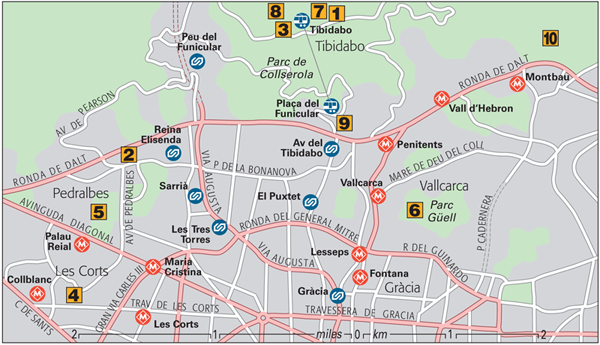
Sights & Attractions Parc d’Atraccions del Tibidabo Take
the 100-year-old funicular up to the top of Tibidabo’s 517-m (1,695-ft)
mountain to visit this traditional amusement park, which first opened
in 1908. Although there are a couple of stomach-churning, white-knuckle
rides, the real attractions are the quaint, old-fashioned ones,
including a beautifully conserved carousel and a Ferris wheel. Here also
is the Museu dels Autòmates, with automatons, mechanical models and a scale model of the park. Pl de Tibidabo
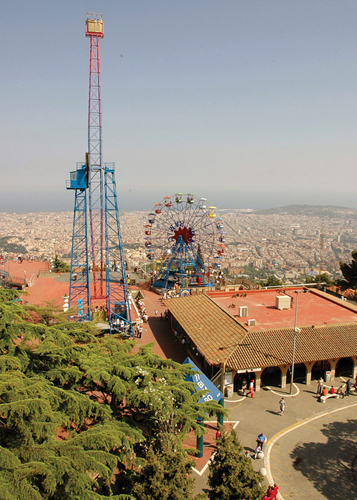
Monestir de Pedralbes Named after the Latin petras albas,
which means white stones, this outstandingly beautiful Gothic monastery
was founded by Queen Elisenda de Montcada de Piños in the early 14th
century. Her alabaster tomb lies in the wall between the church and the
particularly impressive three-storey Gothic cloister. An interesting
glimpse of medieval life is provided by the furnished kitchens, cells,
infirmary and refectory, all of which are well preserved.
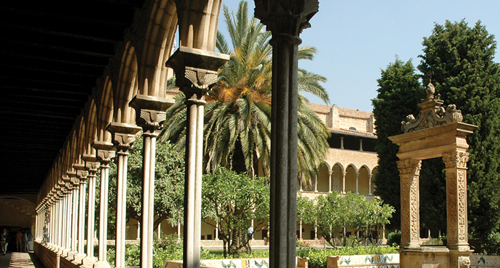
Cloister, Monestir de Pedralbes
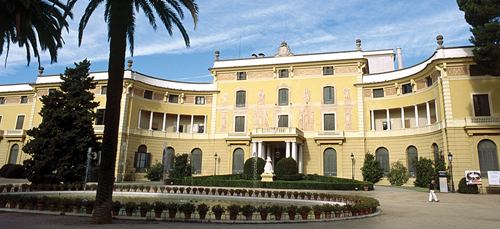
Exterior, Monestir de Pedralbes
Torre de Collserola This
slender telecommunications tower was designed by British architect
Norman Foster. The needle-like upper structure rests on a concrete
pillar and is anchored by 12 huge steel cables. Rising to a height of
560 m (1836 ft) above sea level, the top is reached by a glass-fronted
elevator. On a clear day, you can see Montserrat and the Pyrenees. Parc de Collserola
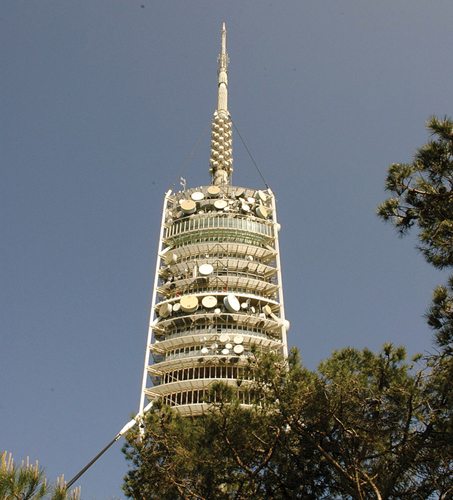
Torre de Collserola
Museu del FC Barcelona & Camp Nou Stadium Barcelona’s
most visited museum is a must for fans of the beautiful game. With
football memorabilia of every conceivable kind, you can learn all about
the club’s history. Work donated by some of Catalonia’s leading artists
is also on display. Admission includes access to Barca’s 120,000-seater
stadium, an impressive monument to the city’s love-affair with the game. Entrance 9 Stadium, Av Arístides Maillol Open 10am–6:30pm Mon–Sat (to 8pm Apr–Oct), 10am–2:30pm Sun Adm
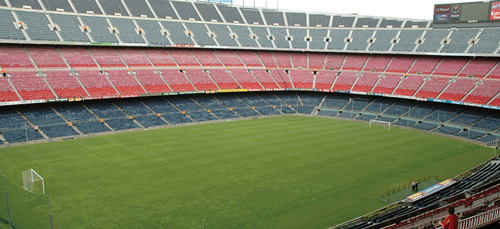
Camp Nou Stadium
Palau Reial de Pedralbes The
former main residence of Count Eusebi Güell was donated to the Spanish
royal family in 1919. Open to the public since 1937, this majestic
palace houses the Museu de Ceràmica, the Museu de Textil and the Museu
de les Arts Decoratives. The former has a fine collection of Catalan and
Moorish ceramics; the Museu de les Arts Decoratives has period
furniture, plus a number of artifacts dating from the Middle Ages
onwards, and the Museu de Textil focuses on fashion and costume. The
magnificent gardens include a fountain designed by Gaudí.
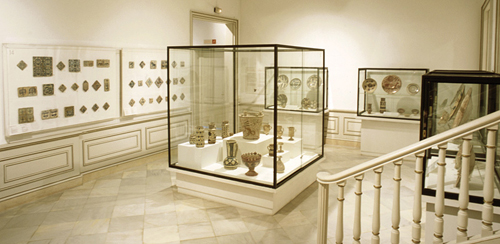
Museu de Ceràmica, Palau Reial
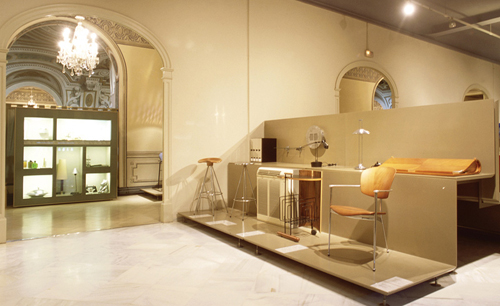
Museu de les Arts Decoratives, Palau Reial
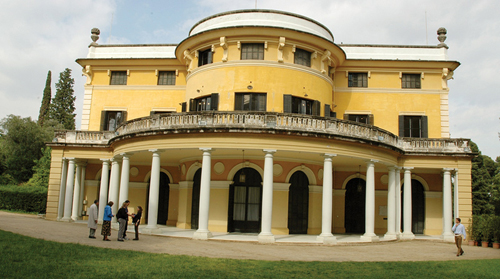
Parc Güell Declared a UNESCO World Heritage Site in 1984, this heady brew of architectural wizardry includes trencadís
tiling, a serpentine bench, fairytale pavilions, Gothic archways, and
the columned Sala Hipóstila (originally intended as a market hall). In
true Gaudí style, playfulness and symbolism pervade every aspect of the
park. The Casa-Museu Gaudí, where Gaudí lived for 20 years, is dedicated
to the architect’s life. C/d’Olot Open 10am–dusk daily Free
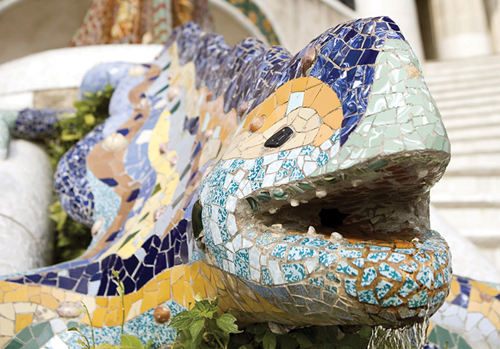
Temple Expiatori del Sagrat Cor Visible
from almost anywhere in Barcelona, the Temple of the Sacred Heart was
built by Enric Sagnier between 1902 and 1911. It has a dramatic
sculpture of Jesus and an elaborately decorated door that verges on the
psychedelic. Take the elevator up the main tower, or climb the steps to
the outside terrace for breathtaking views. Parc de Collserola Beyond
the peaks of Tibidabo mountain, this 6,500-ha (16,000-acre) natural
park of wild forest and winding paths is an oasis of calm. It is great
for hiking and biking , with sign-posted paths and nature trails.
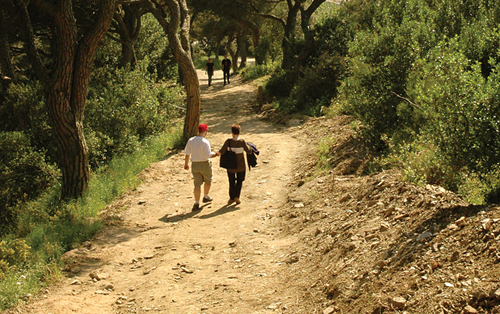
Tramvia Blau The
city’s blue trams, with their old-fashioned, wooden interiors are
attractions in themselves. The route, from the FGC station to Plaça
Doctor Andreu, passes many
Modernista mansions to the top of Avinguda Tibidabo.

Parc del Laberint d’Horta In
1802, the Marquès d’Alfarràs hosted a huge party in these wonderful
Neo-Classical gardens to celebrate the visit of Carles IV. Designed by
Italian architect Domenico Bagotti, they incorporate a lake, a
waterfall, canals and a wonderful cypress-tree maze.
|